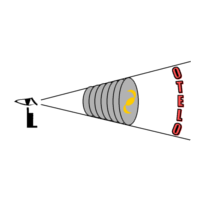QSO
Since the discovery of quasars, their distribution as a function of redshift and luminosity has been acknowledged as a problem of particular importance. First, the ability to observe objects at very high redshifts has provided a cosmological probe of great power, although it is limited by the lack of a complete understanding of the intrinsic properties of the quasar themselves. Second, changes in statistics of the quasar population provide important clues to the evolution of the Universe and to the epoch of galaxy formation.
Many quasar surveys exist that have been obtained using different techniques at different wavelengths, although not all surveys are useful for studying the spatial distribution and space density of quasars. QSOs have been found up to redshifts of 6, which leaves a short time for the formation of their host galaxies. Some studies indicate that the space density of QSOs declines for z > 3, as expected if this is the epoch of galaxy formation. It is important to test this decline by exploring the z > 5 region by defining new deep surveys.
OTELO will be very efficient in detecting AGNs at different redshifts. Quasars will also be detected in emission lines and in the continuum and the survey offers us an unique opportunity to measure the space density of quasars at different redshifts. We must remark that OTELO will provide flux-limited samples in well defined volumes of the Universe, making the survey a very powerful tool for determining accurate luminosity functions for all these populations.
The number of quasars predicted in the survey is 6-7 per field observed in the three spectral windows. The area surveyed will be different for the three windows, being 1000, 57 and 10 fields for the first, second, and third window, respectively. Thus, the expected numbers of QSOs is 700, 140, and 35 in each window in the whole survey. Not that this estimate referes to QSOs detected by their line emission only. As a comparison, the expected number of quasars brighter than B = 27 in a single broad band image is around 100 considering redshifts from 0 to 7.
Ly-α luminosities of these quasars will be in the range 1.5 x 1042-1044 ergs s-1, depending on the redshift window and on the emission line detected.
The result will allow us to obtain quasar luminosity functions at different redshifts and to measure the space density of quasars up to redshift 7, which will have a deep impact on cosmological evolution models of quasars and galaxies.
See also: Related Publications
